Cooking with kids can be one of the most rewarding and educational experiences for families. It not only teaches children essential life skills but also encourages creativity, patience, and responsibility. Getting kids involved in the kitchen helps them understand where food comes from, appreciate healthy eating, and gain confidence in trying new flavors. The key is to make cooking fun, hands-on, and age-appropriate so they stay curious and engaged. Parents can transform everyday cooking into playful learning moments that strengthen family bonds. Whether it’s stirring pancake batter, decorating cupcakes, or planning dinner together, the kitchen can become a place of discovery and joy. Here are eight practical ways to spark children’s interest in cooking and inspire them to enjoy every part of the process, from preparation to plating.
1. Start with Simple Recipes
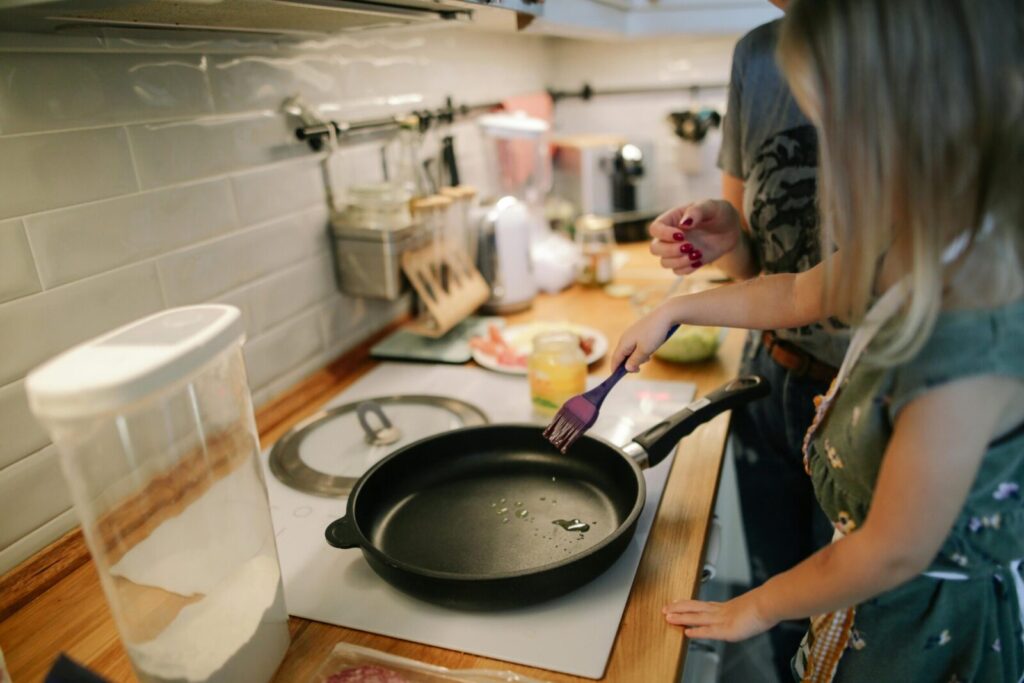
Begin with easy and colorful recipes that children can follow without feeling overwhelmed. Dishes like fruit salads, sandwiches, or homemade pizzas let them mix, pour, and decorate freely. These recipes encourage creativity while introducing them to basic cooking steps such as measuring and mixing. Keeping things simple helps build their confidence and curiosity in the kitchen. Once they succeed with easier dishes, they’ll naturally want to take on more challenging ones. Parents can guide them gently while allowing room for mistakes and learning. The goal is to make cooking an enjoyable experience rather than a chore or competition.
2. Let Them Choose Ingredients
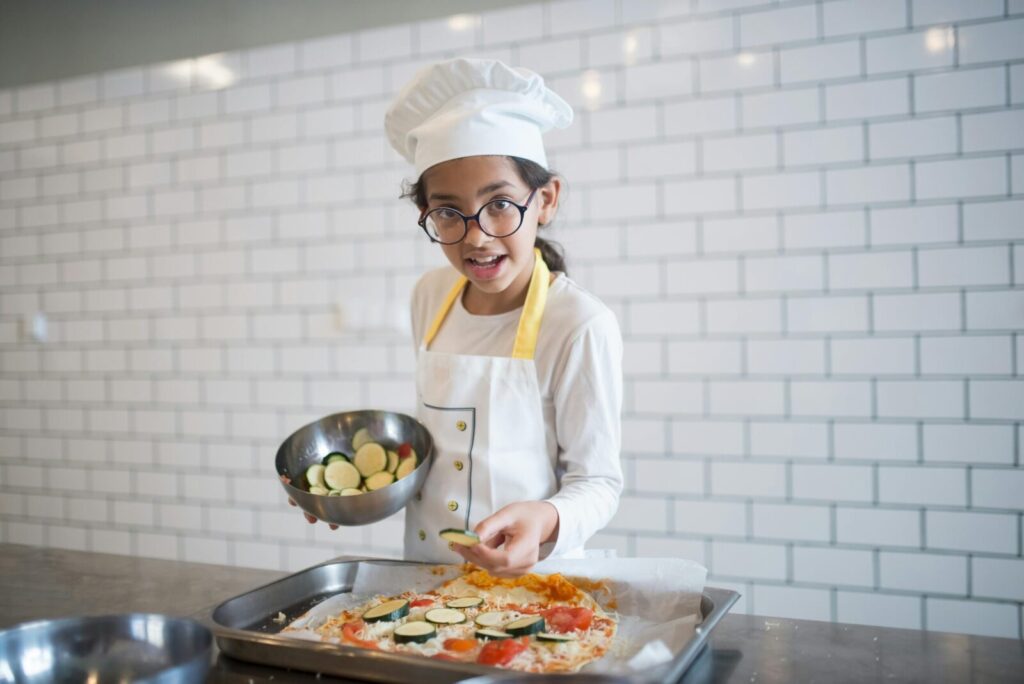
Kids are more likely to get excited about cooking when they have a say in what goes into their meals. Take them grocery shopping or ask them to pick fruits, vegetables, or toppings for a dish. This helps them feel involved and teaches decision-making skills. It also introduces them to new ingredients in a fun way, making them more open to tasting what they helped select. Allowing children to explore colors, textures, and smells of food builds sensory awareness. When kids have ownership over their choices, they become enthusiastic participants rather than passive helpers in the kitchen.
3. Make Cooking a Family Activity
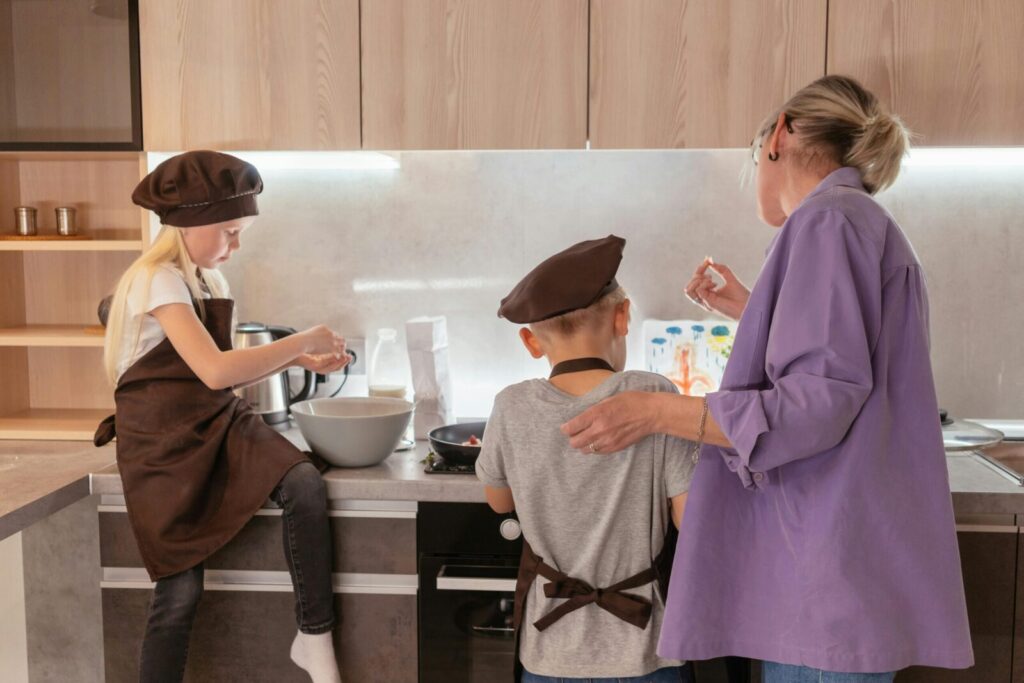
Cooking together transforms mealtime into a bonding experience rather than just a daily task. Assign age-appropriate roles so every family member has something to do. Younger children can wash vegetables or stir sauces, while older ones can handle chopping or measuring. Working as a team fosters cooperation, communication, and shared accomplishment. Psychologists note that family cooking also strengthens emotional connections and teaches kids about teamwork. Laughing over kitchen mishaps and celebrating small successes creates happy memories that last. When children associate cooking with quality time, they’ll look forward to it as a joyful family tradition.
4. Teach Through Play
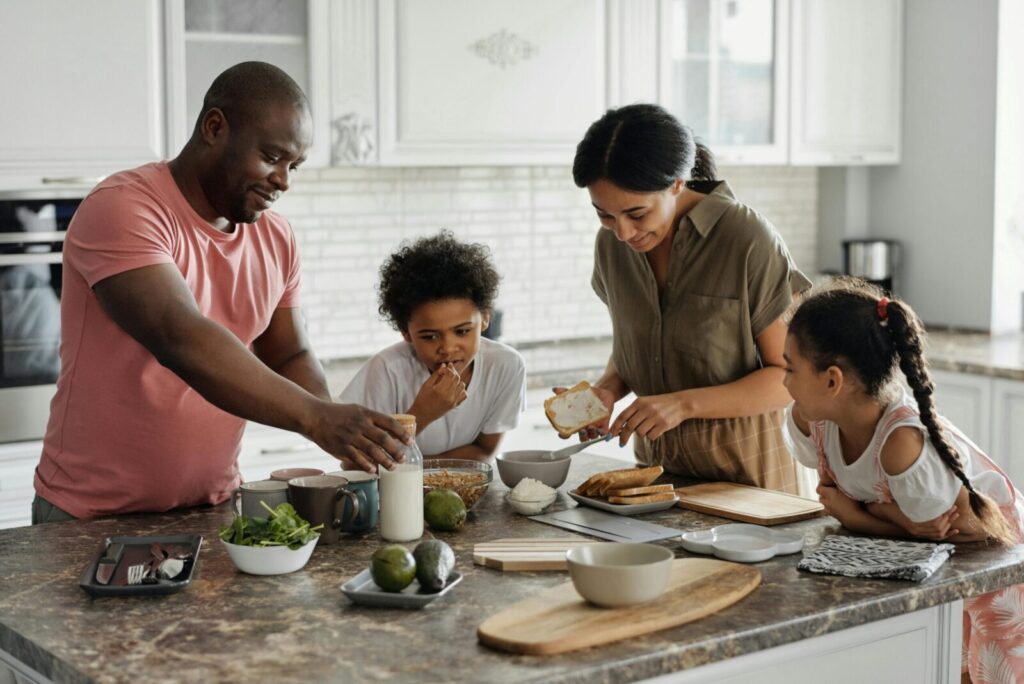
Turn cooking into a game to keep kids entertained and engaged. Use colorful utensils, fun aprons, or shape cutters to make meals more exciting. You can create cooking challenges like who can make the most creative sandwich or decorate cupcakes the fastest. Incorporating playful elements transforms the kitchen into a place of imagination and learning. Children naturally absorb lessons about counting, measuring, and sequencing through hands-on activities. This playful approach not only develops fine motor skills but also keeps them focused. When cooking feels like playtime, kids associate it with fun, exploration, and creativity rather than work.
5. Talk About Nutrition in a Fun Way
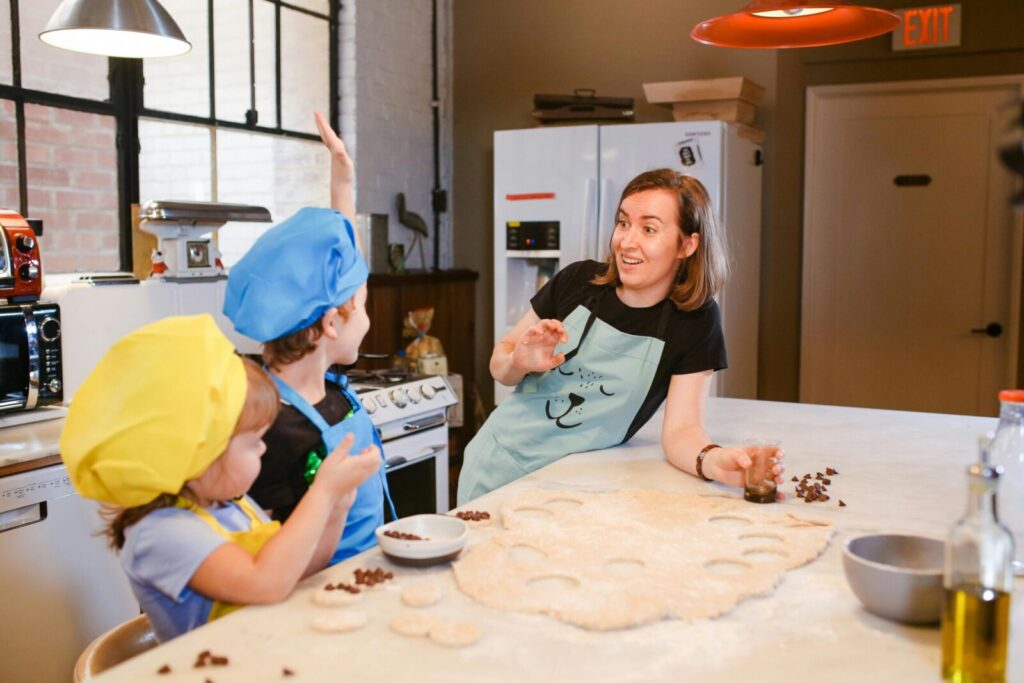
Introducing kids to nutrition doesn’t have to be boring. Explain how foods help their bodies grow stronger, give energy for play, or keep their brains sharp. Use colorful charts or stories about superfoods to make the lesson engaging. You can even let them color a food rainbow by picking ingredients of different shades. This approach builds healthy eating habits early on without pressure or negativity. Kids who understand the benefits of what they eat tend to make smarter food choices later in life. Teaching nutrition playfully encourages curiosity and appreciation for wholesome meals made at home.
6. Encourage Creativity in Presentation
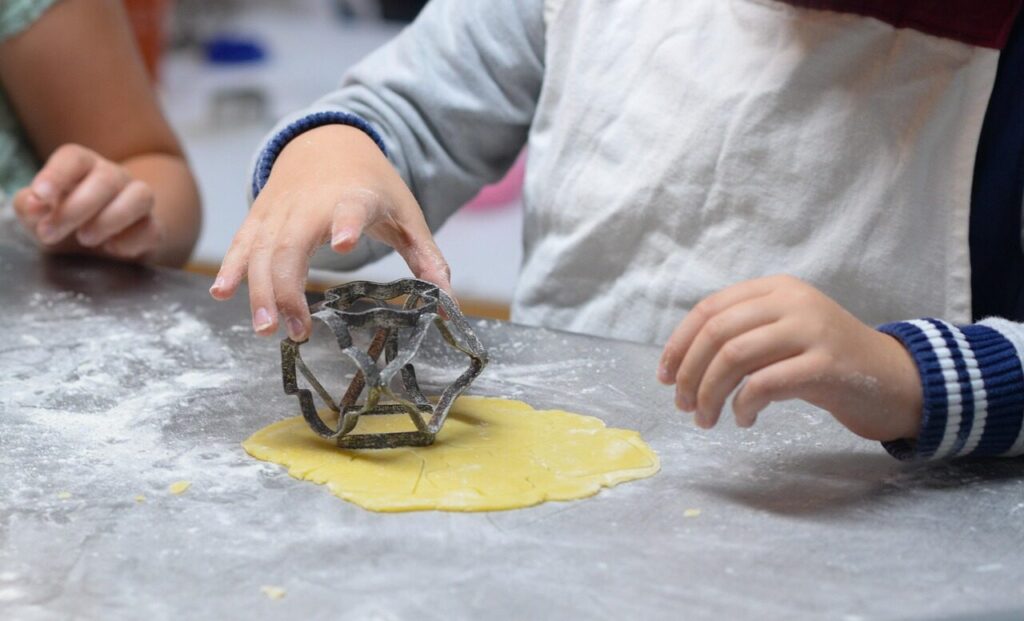
Kids love to show off their creations, so let them take charge of how the food looks on the plate. Encourage them to arrange fruits into smiley faces or design patterns with sauces. This hands-on creativity helps them see cooking as an art form rather than just meal preparation. They’ll also take pride in their finished dishes, boosting confidence and self-expression. Parents can praise their efforts and even photograph their plated meals as keepsakes. Allowing children to experiment with presentation keeps them motivated and invested, making every cooking session feel like a fun and rewarding project.
7. Be Patient and Positive
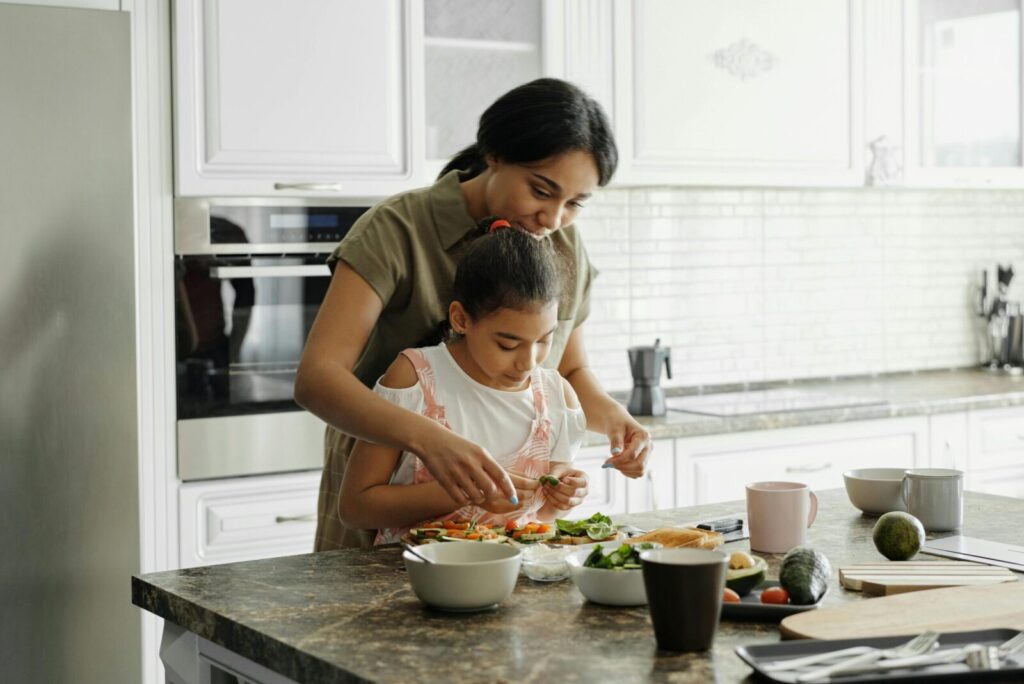
Cooking with kids can get messy, but patience makes the experience more meaningful. Allow them to take their time, make small mistakes, and learn from them without criticism. A positive tone builds confidence and encourages independence. Celebrate their effort rather than focusing on perfection. When children feel supported, they are more likely to keep experimenting and improving. Parents can use encouraging words and humor to maintain a lighthearted atmosphere. Over time, this nurturing environment helps kids associate the kitchen with creativity, comfort, and joy rather than pressure or fear of making mistakes.
8. Celebrate Their Success

Always acknowledge your child’s achievements in the kitchen, no matter how small. Whether it’s cracking an egg correctly or stirring the batter without spilling, every success deserves recognition. Celebrating these moments builds self-esteem and reinforces their interest in cooking. You can even organize a family chef night where kids present their dishes proudly. Sharing meals they helped create makes them feel capable and appreciated. This positive reinforcement motivates them to try new recipes and stay involved. When kids see that their efforts are valued, cooking becomes more than a task; it becomes a source of joy and pride.
Comments